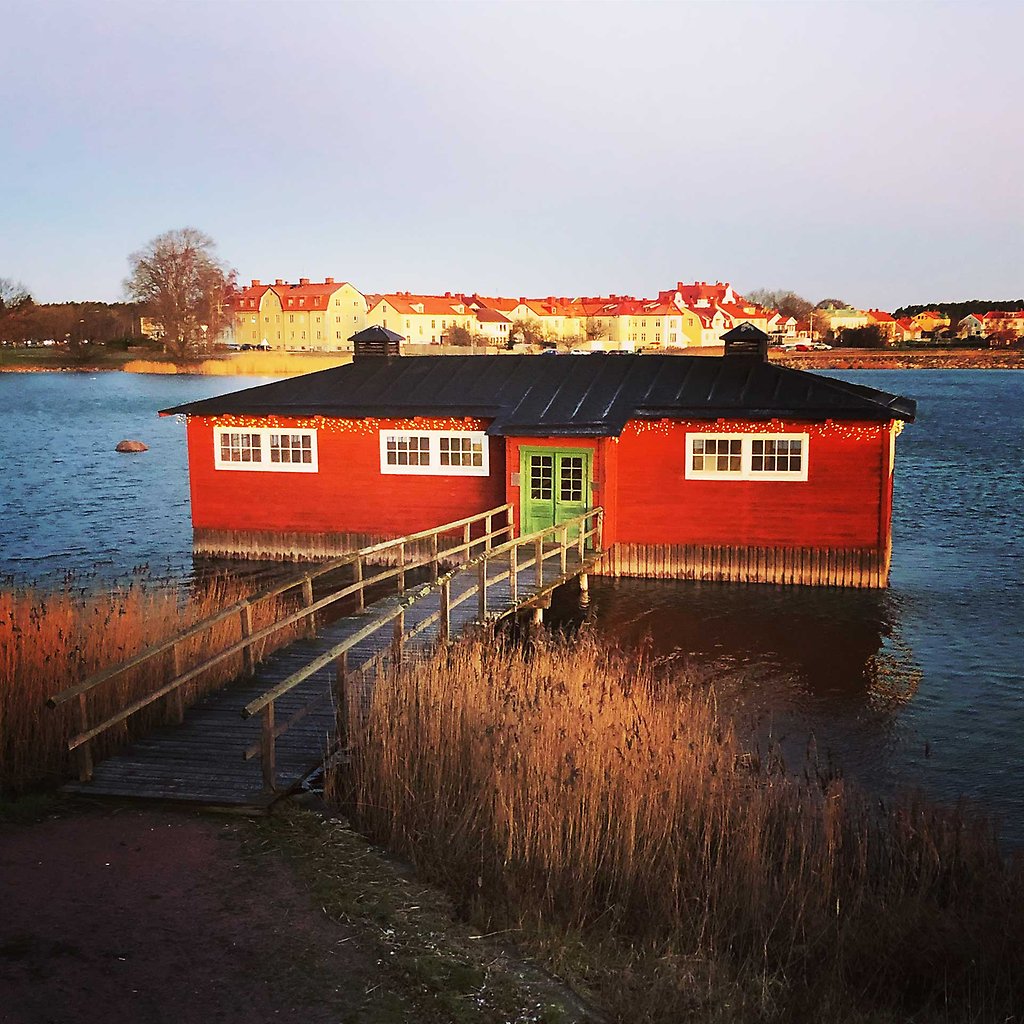Historical buildings
Kalmar is one of Sweden’s oldest cities, and was once among the most important ones of the realm. Read more about some of all the beautiful, well-preserved buildings the city has to offer.
.jpg)
Kalmar Castle
Kalmar Castle dates back to the 12th century. For a long time, it remained an important defence structure, referred to as the Key of the Realm due to its strategic location. In the old days, the Danish border lay just south of Kalmar. Through the years, Kalmar Castle has played an important part in Nordic politics. For example, this is where the Kalmar union was signed in 1397. In the time of the Vasa Kings of the 16th century, the castle was given its current appearance, and turned into a Renaissance building.
tripp trapp trull
These three charming little houses are among the most photographed in Kalmar. They are named according to their size; Tripp and Trapp with two floors, and Trull with just one. They are built on tiny, narrow plots adapted to their location on Fiskargatan. They probably date back to the 17th century, and are typical for the plain building style of that time. Today, the houses are privately owned.
.jpg)
The Town Hall
The town hall was inaugurated in 1690, and its rich architecture is unique in Sweden. Further, the house has been more or less maintained in its original state. It was probably commissioned by Magnus Gabriel Craelius, head of the fortification endeavour at Kalmar. It was built in the Dutch style. The size of the windows indicate the importance of the different floors. The most important was the upstairs floor with the great hall. Today, the building is owned by the Municipality of Kalmar, and houses a portion of the municipal administration.

klapphuset
Klapphuset is one of the most charming houses in the city, and is built on poles in the water. Its name derives from the laundry that was rinsed and beaten here. The present-day building dates from the beginning of the 20th century, and is thought to be the only one preserved in Scandinavia. To this day, rag rugs are washed here, and it is said that the brackish water along with soft soap helps preserve the colours of the rug fabrics. Klapphuset is open from May to September.
.jpg)
The old watertower
With its 65 metres above sea level, and 15 floors, the old water tower is one of Kalmar’s distinctive landmarks. The tower was built to improve the city's capacity for firefighting, and taken into use in 1900. In 1972, the new water tower at Berga was finished, and the old tower was taken out of commission. In the 1980s, it was rebuilt and turned into 11 apartments.
.jpg)
The steam mill
The Kalmar Steam Mill was founded in 1847, and developed by the Jeansson family into Scandinavia's largest, privately owned mill. The enterprise did not just include milling of grain, but also milled rice, and made rolled oats and starch. A change in diet along with foreign competition sent the Swedish mill industry into decline in the 1950s. In 1957, the Kalmar Steam Mill was sold, and eventually closed down. Currently, the old buildings house the Kalmar Hall, the Kalmar County Museum, the County Administrative Board and various offices, among other things.
.jpg)
The Kalmar Theatre
The Kalmar theatre opened in 1863, and was designed by architect Bror Carl Malmberg, who also designed Stora Teatern, the Grand Theatre, in Gothenburg. The interior of the Kalmar theatre is decorated according to the style of the time, in red, white, and gold. The theatre building has also been used as a pool hall, a hotel, a movie theatre, a circus, and a schweizeri, a type of café that served alcohol.
The Kullzén house
The Kullzén house is a well-preserved merchants’ house from the 18th century. This onetime residence of siblings Signe and Henning Kullzén won local fame when in spite of substantial offers, they refused to sell their house when supermarket Domus was being established in the 1960s. The siblings ran a shop on the ground floor, selling used books and stationery, and had living quarters upstairs. Since their death in 1985, the house is being maintained in their spirit. Today, there is a popular café upstairs, which retains the old atmosphere of the place.
.jpg)
dahmska huset
Fortifications engineer Anders Olofsson Bergh commissioned this house, with its lovely saddle roof, at Lilla Torget. The house was finished in 1666, and still bears the initials of Bergh and his wife on the stone portal. Bergh also brought the small yellow wooden house next to the main building from the old town near the castle, when the city was moved. This house is thought to be the oldest wooden building in Kalmar. The man who gave his name to the house was principal O. E. L. Dahm, the owner from 1847 onward.
.jpg)
Domprostgården
This building, too, is located at Lilla Torget and was finished in 1667, but given its present look after the great fire of 1679. The Dean’s House has been the residence of bishops, deans and vicars since 1791. Today, the house serves as the registrar’s office. On the façade is a medallion with one of Sweden's great poets, Erik Johan Stagnelius, who resided here for one year while his father was Bishop of the Kalmar Diocese.
.jpg)
rackargården
At the far end of Norra Långgatan you will find Rackargården. This was the house of the helper of the city’s executioner. Assisting during executions wasn't a full-time job, so the rackare had several other chores, often including unpleasant tasks such as emptying the latrines, carting off garbage, butchering horses and burying those who had committed suicide. The profession disappeared when the capital punishment was abolished, and sanitation improved.
More inspiration
Page published by: Destination Kalmar
